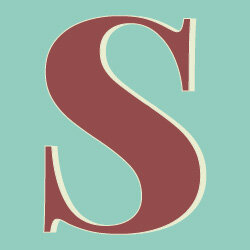PROCESS MANAGEMENT
Storyboard and Template Optimization
The goal: To reduce frustration for cross-functional teams who use storyboards and templates at various phases of production, ensure consistent and high-quality design implementation, and increase efficiency.
How we got there: In the lead-up to the World Languages course, curriculum and interaction design collaborated under the direction of the Creative Director to develop storyboards and web component templates that serve the needs of all teams who use them- curriculum, interaction design, media, and audio.
My role: I worked closely with my counterpart on the instructional design side to develop new storyboards and web component templates, gathering input and feedback from the curriculum team, my fellow interaction designers, the audio team, and the media team.
STORYBOARD UPDATES
Original Storyboard Format
Although storyboards are used by at least four separate teams, layout was determined by one team alone.
Lengthy word documents were easy to get lost in.
Filenames were laboriously typed by hand, with a high rate of error.
Audio and media assets weren’t always clearly called out, resulting in missing assets at build time.
Fields in the storyboard didn’t always match fields in the authoring tool, so the interaction design team often had to return to the writers to ask for more information.
Updated Storyboard Format
Developed with input from all teams who use the storyboards.
Tabbed spreadsheet format is easier to navigate.
Filenames can be automated with formulas, improving efficiency and accuracy.
Audio and media pieces have consistent color-coded headers, making it easier for those teams to scan and find the information they need.
Headers have a one to one correspondence with labels in the authoring tool, ensuring that the interaction design team has all of the information needed for production.
I originally developed these templates for our World Languages course. Teams quickly recognized the benefits in efficiency and cross-team communication. This template format was shortly adopted companywide for all courses in all grade bands.
TEMPLATE UPDATES
Original Template Format
Built as a collaboration between interaction designers and instructional designers at the beginning of the course, templates contained real text, audio, and images so the instructional designers could visualize how the content would really look in the course. This worked well for that phase of the project, but was inefficient in production.
Updated Template Format
Built between the ideation and production phases, the new templates are designed like wireframes.
Labels on images and text in text areas match labels in the authoring tool and storyboards.
Filenames such as tempImg_Card1.jpg explain at a glance what the file is and where it fits into the template.
The clarity of the templates reduces the need for training sessions for new designers, and has resulted in much quicker build times. For one especially complicated template, build time was reduced from two hours to fifteen minutes.
OUTCOME
We first used these updated templates and storyboards for our World Languages: Spanish course builds. We produced nearly 2,000 web components for 7 courses in a language most of the team did not speak, and production was completed weeks ahead of schedule.
Rachel is a deliberate and creative designer with an eye for detail as well as the big picture. She is highly visual and also well versed in user experience, a rare combination. Rachel jumps into projects, asking the hard questions to understand the broad view. She thinks about the user experience, and also remembers to create solutions that are practical and achievable.
-Erica Melville-Castle, Director of Design, Carnegie LearningWhen we took on the World Languages prototype Rachel was trusted to create our new spreadsheet storyboards and collaborated closely with integral team leaders to produce what is now our best in class standard for storyboarding at Stride.
-Amy Velasquez, Creative Director, Stride




